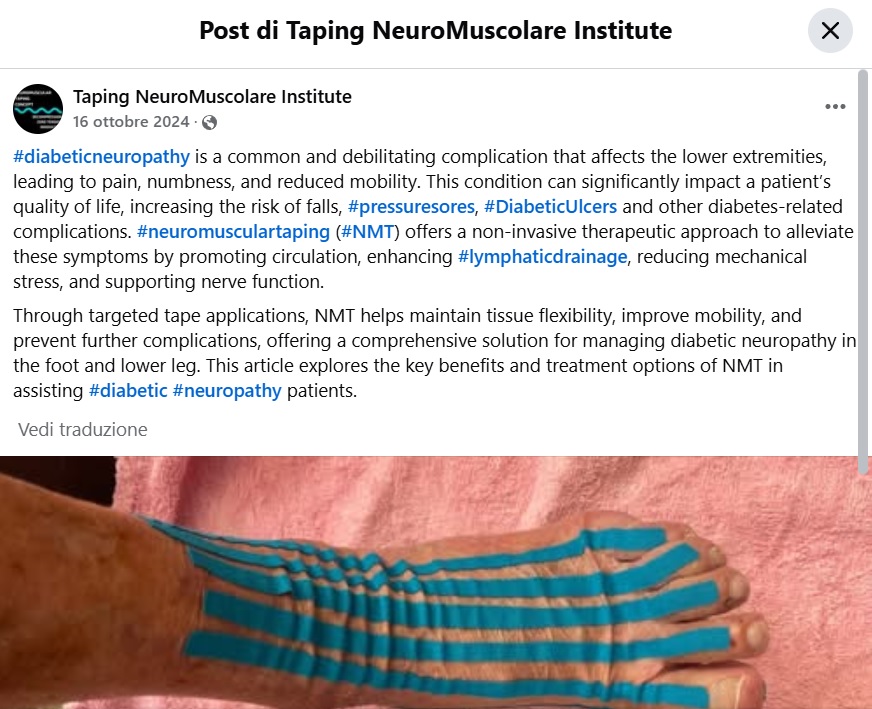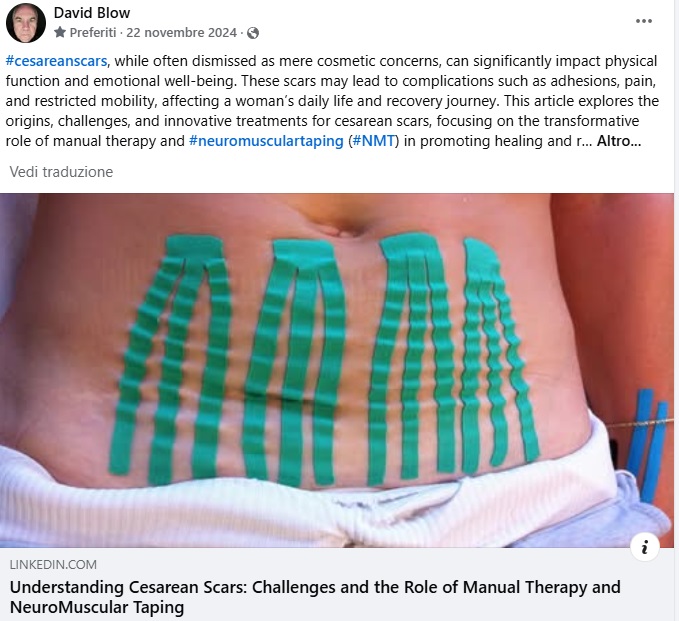CHOOSE YOUR LANGUAGE:
Physiotherapist

The method of NeuroMuscular Taping (NMT Concept) “.. uses decompression and compression stimuli to obtain beneficial effects on the musculoskeletal systems, vascular, lymphatic and neurological, with clinical and rehabilitative purposes.
With the application of tapes, skin folds are formed during body movement which facilitate the lymphatic drainage, favor the blood vascularization, reduce the pain, improve the muscle-joint range of motion and the position. (…) NeuroMuscular taping is a non-invasive and non-pharmacological technique, which, through the application of an adhesive and elastic tape with particular mechanoelastic characteristics, offers a mechanical stimulation capable of creating space in the tissues; promote cell metabolism, activate the natural covering skills of the cover e normalize the proprioception neuromuscular.” (Blow D., 2012).
INDICATIONS (they are only examples because the field of application is very vast):
Contraindications:

DIABETIC NEUROPATHY
Diabetic neuropathy is a common complication in patients with diabetes. It affects the ends of the lower limbs and involves pain, feeling of numbness and reduction of mobility. Significantly impact on the quality of life of patients and increases the risk of falls, ulcers, Decubitus plagues and other complications related to this pathology. The NMT offers a non -invasive therapeutic approach to relieve these symptoms by improving circulation and lymphatic drainage, reducing mechanical stress and supporting the function of the nerve. Through targeted applications, The NMT helps to maintain the flexibility of the fabrics, to improve mobility and prevent complications, Thus offering a large approach to manage diabetic neuropathy of the foot and lower limb. (Translation from David Blow's POS).


My profile NEUROMUSCOLA TAPING INSTITUTE.
BIBLIOGRAPHY:
Blow David. Neuromuscular Taping. From theory to practice. 2012 Edi-ermes